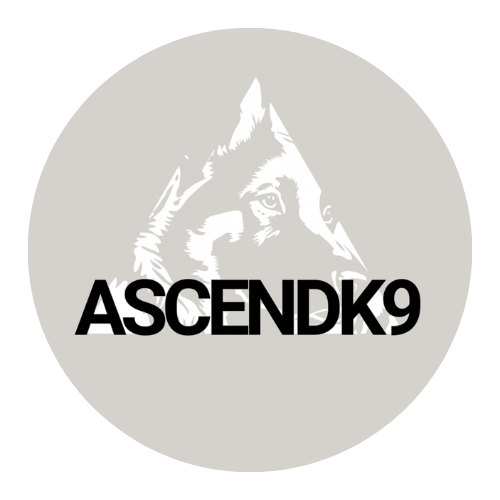How to Train a Place Command
Training your dog to go to a designated “place” is one of the most practical life skills you can teach. Whether it’s helping them settle at home, creating calmness in exciting environments, or building focus and impulse control, dog place training lays the foundation for a more balanced and responsive companion.
At ASCENDK9, we specialise in helping dogs and owners across Essex and Hertfordshire develop strong relationships based on clarity and communication. In this blog, we’ll walk you through how to train a place command, why free shaping is such an effective method, and how to use this skill responsibly, including the use of tethers when appropriate.
Having a defined “place” gives your dog a clear job, which can lower anxiety and over-arousal.
What Is Place Training and Why Is It So Useful?
The “place” command simply means sending your dog to a specific spot—like a mat, bed, platform or raised surface—where they stay calmly until released.
Why it’s a game-changer:
Teaches calmness and impulse control
Helps manage overexcitement around guests or distractions
Builds confidence through clear structure
Gives your dog a predictable “job” to do
Encourages settle behaviours without conflict or constant micromanaging
In short, it’s one of the most valuable behaviours for everyday life. Especially for dogs who struggle to switch off, get overstimulated, or find certain environments overwhelming.
When dogs figure it out themselves, they’re more engaged and confident… and it sticks.
How to Teach Place and Why Free Shaping Works Best
When it comes to how to teach place, we recommend a free shaping approach.
What is free shaping?
Free shaping means allowing your dog to offer behaviours voluntarily without physical guidance, then marking and rewarding those that bring them closer to the goal - in this case, going to the place object and settling.
Why free shaping rocks:
Builds engagement and focus
Encourages your dog to think independently
Creates a stronger understanding of the behaviour
Reinforces the idea that calmness earns rewards
You’re not luring, using lead pressure or commanding - instead, you’re helping your dog learn how to problem-solve and make great choices.
🐾 Step-by-Step: How to Train Place Using Free Shaping
Here’s a basic guide for how to train your dog a place command:
Set up your place object (mat, bed, platform) in a quiet, low-distraction environment.
Have high-value treats ready and a clicker or marker word like “yes”.
Wait patiently for your dog to look at or move toward the place. Mark and reward.
Continue shaping - reward for putting paws on, standing on, then sitting or lying down on the place.
Once they reliably go to place, begin adding a verbal cue like “place” just before they move.
Start building duration, distance and distractions gradually while keeping success high.
Keep sessions short and positive. Free shaping can be mentally tiring (in a good way)!
Your dog won’t “just grow out” of being excitable. Place helps teach calmness.
When (and When Not) to Use a Tether in Dog Settle Training
For dogs that really struggle to settle, a tether can help create structure and reduce the urge to wander or escape the place.
But here’s the important bit:
- Use only in safe, supervised environments
- Combine with positive reinforcement - never use a tether as punishment
- Ensure your dog has been properly conditioned to the tether
- Don’t use in high-stress or distracting environments before your dog is ready
- Don’t tether a fearful or anxious dog without support from a professional
Think of it as a training tool - useful at the right stage, but not forever.
It helps your dog learn to switch off, self-soothe, and handle excitement or uncertainty calmly.
Why Settle Training Should Be a Core Part of Your Dog’s Routine
Whether you’re raising a puppy or helping an adult dog with reactivity or overstimulation, settle training is essential.
The place command gives your dog a clear boundary and a mental shift: "This is my chill zone."
It helps with:
Guests entering the home
Meal times or evenings on the sofa
Café or pub visits
Vet waiting rooms
General calmness in daily life
Place isn’t about punishment - it’s about providing comfort and structure in a chaotic world.
Need Help with Dog Place Training in Essex or Hertfordshire?
If you’re wondering how to train place, struggling with a dog who won’t settle, or want expert guidance using free shaping methods, we’re here to help.
At ASCENDK9, we offer tailored puppy and dog training across Harlow, Essex and Hertfordshire, with a focus on real-life skills, relationship-building, and lasting calmness.
📩 Book a training session online or learn more about how we can support you and your dog on your journey here.





